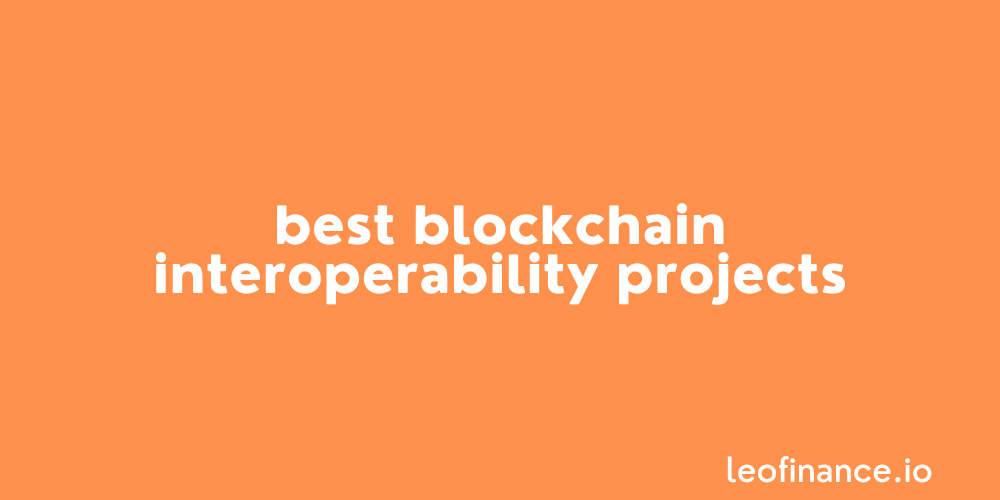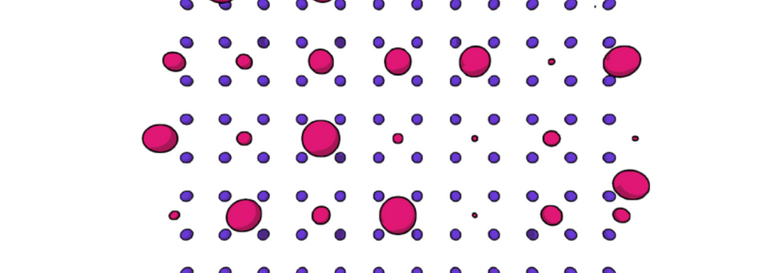Best blockchain interoperability projects

Direct from the desk of Dane Williams.
Comparing the major blockchain interoperability projects of Quant vs Cosmos vs Polkadot, and making a call on which is best.
Blockchain interoperability has emerged as a key challenge facing the at times, fragmented blockchain ecosystem.
With hundreds of blockchain networks, each with its own set of protocols and governance mechanisms, creating a network of interconnected blockchains that can exchange value and data seamlessly is a complex task.
Especially if you want to achieve that goal in a decentralised manner.
To address this challenge, several blockchain interoperability projects have emerged.
Each with their own approach to connecting different blockchain networks.
In this blog, I'll compare three major blockchain interoperability projects:
- Polkadot (DOT)
- Cosmos (ATOM)
- Quant (QNT)
For each project, I’ll provide an overview of the project, its unique features and its approach to achieving blockchain interoperability.
Finally, I'll provide my verdict on the best blockchain interoperability project.
Let's get into it.

What is the concept of blockchain interoperability?
Blockchain interoperability is the concept of enabling different blockchain networks to communicate and transact with each other.
The goal is to create a decentralised network of interconnected blockchains that can exchange value and data seamlessly.
The need for interoperability arises because of the fragmented nature of the blockchain ecosystem we are seeing built around us.
Currently, there are hundreds of blockchain networks, each with its own set of protocols, governance mechanisms and consensus algorithms.
This fragmentation creates barriers to entry for developers and limits the potential for blockchain technology to achieve mass adoption.
To address these challenges, several blockchain interoperability projects have emerged.
These projects aim to create a unified network of interconnected blockchains that can facilitate the exchange of value and data across different networks.
By connecting different blockchain networks, these projects can unlock new use cases and enable new forms of collaboration.
Three of the biggest blockchain interoperability projects are Polkadot, Cosmos and Quant.
Each of these projects has its own approach to interoperability, with unique protocols and mechanisms for connecting different blockchain networks.
Let’s take a more detailed look at each.
Quant (QNT)
Quant (QNT) is a blockchain interoperability project that aims to connect different networks and facilitate the exchange of value and data.
It achieves this through its Overledger Network, which is a decentralised network that enables cross-chain communication and interoperability.
The Overledger Network is designed to connect different blockchains and networks, including public, private and permissioned blockchains.
It allows these networks to exchange data and value seamlessly, without the need for intermediaries.
The Overledger Network uses a unique protocol called the Quant Network Protocol, which ensures that all transactions are secure and compliant with regulatory requirements.
Quant also has its own blockchain, called the Quant Chain, which is used to connect different networks and enable cross-chain transactions.
The Quant Chain uses a proof-of-stake consensus algorithm to secure the network and validate transactions.
The Quant ecosystem is overseen by the QNT token, which is used as a utility token for the network.
QNT holders can use the token to access different services on the Overledger Network and participate in the network's governance.
Summing up, Polkadot's sharded architecture and support for parachains make it a powerful solution for blockchain interoperability.
Its growing ecosystem and active community also make it a promising option for developers.
Cosmos (ATOM)
Cosmos (ATOM) is the next blockchain interoperability project that aims to create an "Internet of Blockchains".
It achieves this through the use of a unique protocol called the Inter-Blockchain Communication (IBC) protocol, which allows different blockchain networks to communicate and transact with each other.
The IBC protocol enables Cosmos to create a decentralised network of interconnected blockchains, where each blockchain can maintain its own governance and consensus mechanisms.
Cosmos also has its own blockchain, called the Cosmos Hub, which acts as a central hub for the network.
The Cosmos Hub uses a proof-of-stake consensus algorithm to secure the network and validate transactions.
The Cosmos ecosystem is overseen by the ATOM token, which is used as a governance token for the network.
ATOM holders can vote on proposals to upgrade the network and allocate resources to different projects.
As you can see, Cosmos's focus on creating an Internet of Blockchains through the IBC protocol is a powerful solution for blockchain interoperability.
Its ability to support multiple blockchains with different consensus mechanisms and governance models makes it a flexible option for developers.
Its active community and growing ecosystem also make it a promising choice for the future of blockchain technology.
Polkadot (DOT)
Polkadot (DOT) is the final featured blockchain interoperability project.
It uses a unique sharded architecture to enable interoperability between different blockchains and achieves this by allowing developers to create their own blockchain networks, called parachains.
All connected to the central Polkadot network.
The idea is that Parachains can interact and transact with each other, as well as with other blockchains that are connected to the Polkadot network.
The Polkadot ecosystem also includes the DOT token, which is used for governance and transaction fees on the network.
DOT holders can vote on proposals to upgrade the network and allocate resources to different parachains.
Polkadot's governance mechanism ensures that the network remains decentralised and community-driven.
Finally, Polkadot's sharded architecture and support for parachains make it a powerful solution for blockchain interoperability.
Its growing ecosystem and active community also make it a promising option.
Final verdict on the best blockchain interoperability project
As you can see summarised in the following table, each of these three blockchain interoperability projects have its unique strengths and weaknesses:
| Feature | Polkadot | Cosmos | Quant |
|---|---|---|---|
| Mainnet | Yes | Yes | Yes |
| Consensus | Nominated Proof of Stake (NPoS) | Tendermint BFT | Ethereum (ETH) |
| Interoperability protocol | XCMP | IBC | Overledger Network |
| Sharding | Yes | No | No |
| Parachains | Yes | No | No |
| Smart contracts | Yes (EVM compatible) | Yes (CosmWasm) | Yes (Ethereum Virtual Machine (EVM)) |
| Governance | Polkadot Relay Chain & Parachains | Cosmos Hub & Zones | QNT Token holders |
Furthermore, Polkadot stands out for its sharded architecture, support for parachains, and its active community.
Cosmos, on the other hand, has its IBC protocol, which enables the internet of blockchains and cross-chain communication.
Finally, Quant's Overledger Network provides a unique approach to interoperability by allowing for the creation of "multi-chain applications" that can interact with different blockchain networks.
It's worth noting that the decision for the best blockchain interoperability project is subjective, and there is no one right answer.
However, I’ve chosen Polkadot as my best blockchain interoperability project.
The project’s sharded architecture and support for parachains make it a promising solution for achieving blockchain interoperability.
Polkadot currently has the highest market capitalisation among the three projects and whether you think so or not, the market never lies.
This indicates that it has gained significant traction and support from those in the community who are building and using these projects.
And for me, that ultimately speaks volumes.
Best of probabilities to you.
Posted Using LeoFinance Beta

It certainly seems like polka dot is a solid choice for the best of them as far as interoperability. I know it’s been a pretty popular chain for people to talk about but didn’t know a whole lot about it until now so thanks for the post!
Posted Using LeoFinance Beta
I just find the concept of Parachains to be really cool.
Certainly worth looking a little deeper into if you're into this sort of thing :)
Posted Using LeoFinance Beta
I think I would choose Polkadot as well because I am not sure if using a EVM system is that great. It reminds me too much of ETH and the fees explode as the network gets more busy. As for COSMOS, I don't really like the IBC that much. I have heard some stuff about that makes me scratch my head about the founder and how they work.
Posted Using LeoFinance Beta
Oo, do share ;)
Posted Using LeoFinance Beta
Here is a playlist about Mario Newfal. It is a series if you don't mind.
Posted Using LeoFinance Beta
Overall, these above mentioned projects are leading the way in blockchain interoperability and are making it easier for different blockchain networks to communicate and share data and assets.
However,Polkadot comes clear because it happens to be one of the most leading and promising blockchain interoperability projects, which steadfastly aims to solve the problem of blockchain fragmentation by enabling interoperability between different blockchain networks.
Posted Using LeoFinance Beta
I agree man.
I have always really liked what Polkadot are doing.
Posted Using LeoFinance Beta